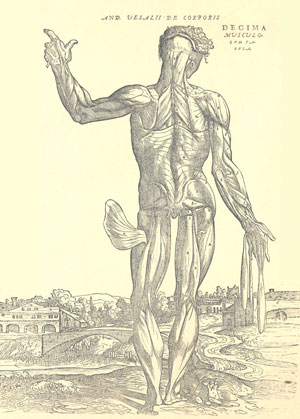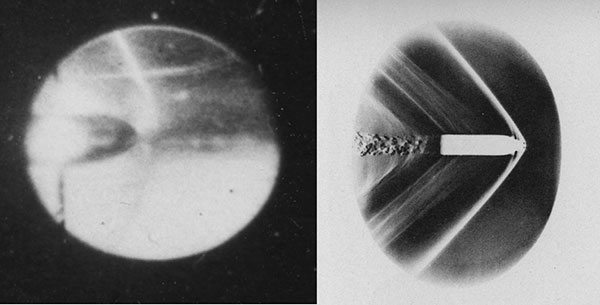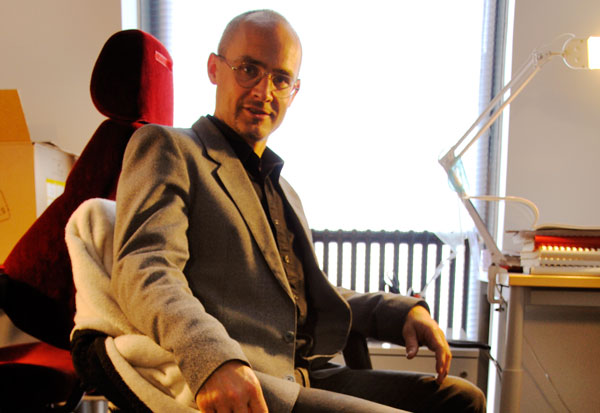Generally speaking, the aim of visualization is to produce pictures that present information as clearly as possible. Learning to create these types of images requires training, particularly if they are to support a scientific text.
By Marcus Prest
There is a vast number of scientific images in circulation, mainly created by natural scientists who have not sufficiently taken into account how people see images and how people deduce information from pictures”, says art historian Fred Andersson, who teaches visual studies at Åbo Akademi University.
The first example of biovisualization in a modern sense is Andreas Vesalius’s collection of illustrated textbooks, De humani corporis fabrica, published in 1543. It represents what Andersson calls top-level research in the field of anatomy during the Renaissance. Vesalius’ pictures demonstrate that at that period in time, no distinction was made between art and science.
“To simplify, it could be said that in the 16th century, there was neither art nor science in a modern sense. These were entities that were intertwined. The terms used were medical art, the art of war and so on. And it was a given that an anatomist was a master drawer as well as a medical expert.”

Andreas Vesalius, “Decima musculorum tabula” (‘Muscle Plate Number Ten’) from De humani corporis fabrica (Basel 1543 and 1555).
Vesalius’ pictures combine the unknown with the well-known in a way which still characterises biovisualization today. The subjects are presented in classical poses, as in figure-paintings. This was achieved by hanging human corpses in the position needed for the particular illustration using ropes attached to the studio walls and ceiling. Neither the hanging device, nor the studio environment is depicted in the actual image. Often a classic landscape is seen in the background. So what we see is both a very realistic image and a picture with strong fictional features, as in any created image. There was no concept of a separate form of expression for scientific pictures; anatomical illustrations were like any other pictures.
“Looking at Muslim pictures from the same period, we see an obvious and important difference: reduction. The Arabs and Persians, who at that point in time had the most advanced medical culture, created illustrations much more similar to our present-day visualizations than the naturalistic Renaissance pictures. In their reductions, the Arabs demonstrated what they already knew about the body. The Western-European style during the Renaissance was explained by the fact that the naturalistic picture had been rediscovered.”
This had an impact not only within medicine, but also for the visual arts, since an ideal which depicted nature in exact detail had developed, and this was taught at the fine art academies which were established in the 17th century. The institution of the art academies meant that the state directly influenced art and medicine, since governments supported the academies financially. Earlier, artists were trained as apprentices with a master painter. But in the 17th century a kind of ‘university education’ was introduced for artists. (The actual universities at that time only taught philosophy, medicine, law and theology.)
“Our current art education at universities encompasses subjects within the humanities and philosophy. During the Renaissance, the training of artists was medically and technically focussed. The link between art and science has more or less disappeared today.
“In order to do what we’re doing now, that is, creating an exchange of knowledge between aesthetic subjects and natural sciences, artificial arrangements are needed – such as courses in biovisualization. It is artificial since there are no natural platforms for cooperation between natural scientists and humanists. Our educational backgrounds are totally different and we don’t speak the same language.”
The need to combine aesthetic, humanist and science subjects is growing, partly because in the long run it seems limited and narrow-minded to have completely different cultures.
“I think we who teach the humanities have a need to see a clearer application for what we do, while natural scientists need to learn to communicate their results.”
When it comes to natural scientists whose work has had a great impact, visual elements have often been essential for illustrating and spreading their ideas. Einstein’s theory of relativity is one such example: “E = mc2?” is a clear image; although it is a formula consisting of letters and a number, it forms a visual picture that most people in our culture immediately recognise. The image as such does not say anything on the theory of relativity, but it functions as a trigger for the memory. According to Andersson, the same can be said about Ernst Mach’s demonstrations of the dynamics of motion in the late 19th century.

One of Ernst Mach and Peter Salcher’s first ballistic photographs
taken in April/May 1886 (left) in comparison to an illustration from Mach’s article “Weitere Versuche über Projectile” (‘Further Experiments with Projectiles’) published in 1896.
“Mach’s photos of, for example, a bullet passing through air and sheets of cardboard, do not tell us anything in their raw versions. The pictures that were later presented, and which most people think are the original ones, are actually highly abstracted. The edited images nevertheless show what has later come to be called the ‘Mach cone’, which was used in the emerging field of ballistics in the late 19th century.”
“Images can also be discussed in terms of visualization technology. At various stages, technology offers various opportunities for visualization – the object of visualization must be adapted to the image technology. Colours play an important part within biovisualization. Take for example a PET scan of an internal organ, like the heart – the data registered only shows the level of radioactive uptake, but with the use of colour coding the images might show what we are looking for.”
Without expert knowledge visualization is meaningless, and the type of visualization varies greatly depending on the field of research. For example, sociological studies are not based on photographs.
“Such research can even be made seductively graphic for rhetorical purposes. And biovisualization, too, may be used rhetorically, for example to provide a scientific field with a certain image. There are various stages in the way in which images are used and separated from their original context. One example are some pictures used within modern physics. They have no direct connection to the processes that are being visualised, since these are processes that cannot be translated into sensory qualities. One such instance are the well-known Feynman diagrams created by Richard Feynman.”


